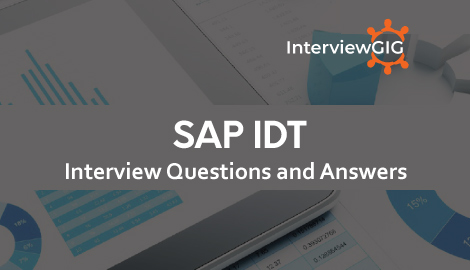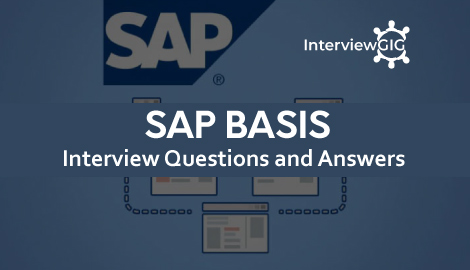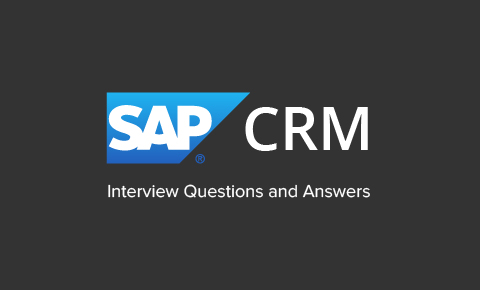SAP IDT Interview Questions
SAP Integration Technology (IDT) is a tool within the SAP Business Warehouse (BW) suite used for data modelling, transformation, and cleansing. While still used in some legacy systems, its functionality has been largely superseded by SAP Data Warehouse Cloud (DWC) in the cloud-based landscape.
Here are 10 potential interview questions about SAP IDT, along with answers acknowledging the context:
Question: What is SAP IDT, and what is its role in the SAP Business Warehouse (BW) environment?
Answer: “SAP IDT, or Information Design Tool, is a tool within SAP BW used for data modelling, transformation, and cleansing. It allows users to define the structure and logic of data used in BW reports and analyses.”
Question: What are the key functionalities of SAP IDT?
Answer: “IDT offers functionalities for:
- Data modeling: Defining the structure of data objects like dimensions and measures.
- Data transformation: Applying rules to modify and manipulate data to fit specific needs.
- Data cleansing: Identifying and correcting errors or inconsistencies in data.”
Question: Can you explain SAP Data Warehouse Cloud (DWC)?
SAP Data Warehouse Cloud (DWC) Overview:
SAP DWC is a cloud-based data warehousing solution introduced by SAP to address the evolving needs of modern data management.
Role in Data Warehousing Landscape: DWC integrates data warehousing, data integration, and analytics in a cloud environment. It enables organizations to leverage the benefits of a scalable and flexible data warehouse solution.
Key Features: DWC offers features such as collaborative data modeling, advanced analytics, and seamless integration with SAP and non-SAP data sources. It supports hybrid scenarios, allowing organizations to connect on-premises and cloud-based data.
Question: What are the different types of transformations available in IDT?
Answer: “IDT offers various transformations, including:
- Conversions: Changing data formats (e.g., date, currency).
- Calculations: Performing mathematical operations on data.
- Lookups: Mapping values from one source to another based on defined criteria.
- Conditional transformations: Applying logic based on specific conditions.”
Question: How does IDT connect to different data sources?
Answer: “IDT can connect to various data sources, including:
- Relational databases like SAP HANA, Oracle, and SQL Server.
- SAP systems (e.g., SAP ECC).
- Flat files (e.g., CSV, Excel).”
Question: What is the difference between a Universe and a Universe Connection in IDT.
Answer: “A Universe is a logical representation of data, including objects and transformations, defined in IDT. A Universe Connection defines the physical connection between IDT and the actual data source.”
Question: What are some of the limitations of using SAP IDT compared to newer data warehousing solutions?
Answer: “While IDT offers valuable functionalities, it has limitations compared to newer solutions like DWC:
- Limited cloud capabilities: IDT is primarily on-premise, while DWC is cloud-native.
- Complexity: IDT can be complex to learn and manage compared to user-friendly interfaces of newer tools.
- Scalability: DWC offers better scalability for growing data volumes.”
Question: How do you stay updated on the evolving data warehousing landscape, considering the trend towards cloud-based solutions?
Answer: “To stay updated, I actively follow industry news, participate in online forums and communities, and explore learning resources for cloud-based data warehousing solutions like SAP DWC. This ensures I can adapt my skills and knowledge to the evolving landscape.”
Question: (If applicable) Describe a specific project where you used SAP IDT to solve a data management challenge?
Answer: (Share a relevant experience highlighting your skills and problem-solving abilities using IDT).
Question: What are your thoughts on the future of SAP IDT in the context of the evolving data warehousing landscape?
Answer: “While IDT remains relevant in existing on-premise deployments, the future of data warehousing is likely cloud-based. I believe continuously learning and adapting to newer solutions like DWC is crucial for success in this evolving field.
Below, we have listed all the Top SAP IDT interview Questions and Answers for freshers& Experienced.
What is Information Design tool? Which all reporting and Dashboard tools you have used with IDT?
What is the Data foundation and Business Layer in IDT?
What is difference between a Relational and an OLAP connection?
When you perform a conversion in UMT, unv files are converted to unx files?
When you convert a UNV file to UNX files, which of the features are not supported?
What do you understand by custom hierarchies?
What is the difference between a cnx and cns file?
What is personal, public and secured connection?
What is Chasm trap? How do you resolve this?
What is Fan trap? How do you resolve this?
What is Aggregate awareness? How do you use this?
How to set up Aggregate awareness?
What is Index awareness?
What is the use of Query panel?
What is a derived table and why do you use it?
How you can access a derived table from other derived table?
What is an alias table and why do we use it in Universe?
What are the different states in Context?
When you use an OLAP connection to build a Business layer, what happens to objects?
What is difference between LOV’s and prompt in a query panel filter?
What do you understand by resource dependency in Universe?
What is repository dependency on an object in a local project?
What is the use of SAP BO Dashboard?
What are the different Dashboard versions you have worked on?
What are the options under component browser?
How would you connect SAP ECC system to Dashboard designer?
How can you add data from a Universe/IDT to Dashboard?
What is docking/undocking concept in Dashboard designer?
Where do you define behavior, insertion and general properties of a component?
Where can you define color setting for a component in data model? What ae the options in color dialog box?
What are the different output formats in Dashboard?
What is a container component? What are the different types of Container?
What is selector component? What are the different types of selector component?
What is the use of single value component? What are the different styles of single value component?
What is web connectivity components? What are the different component types?
What is query refresh or query prompt under Universe component?
What are the different data connections that are supported in Dashboard Designer?





